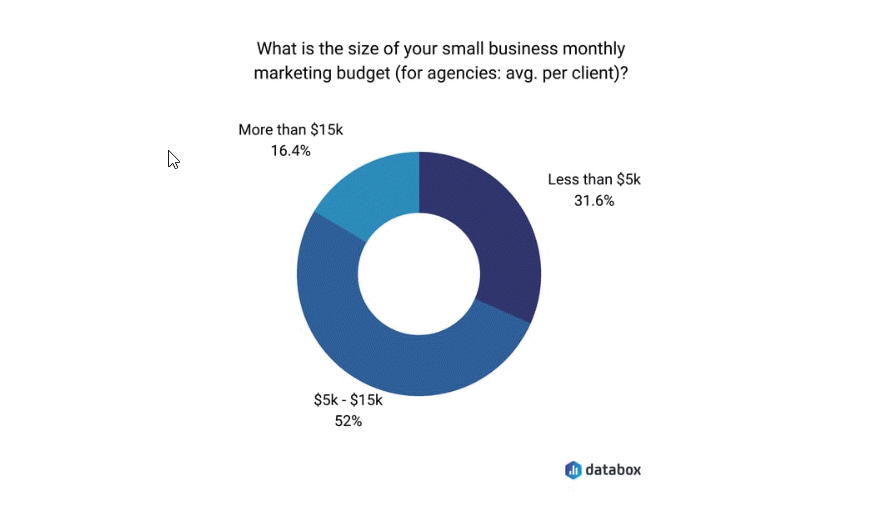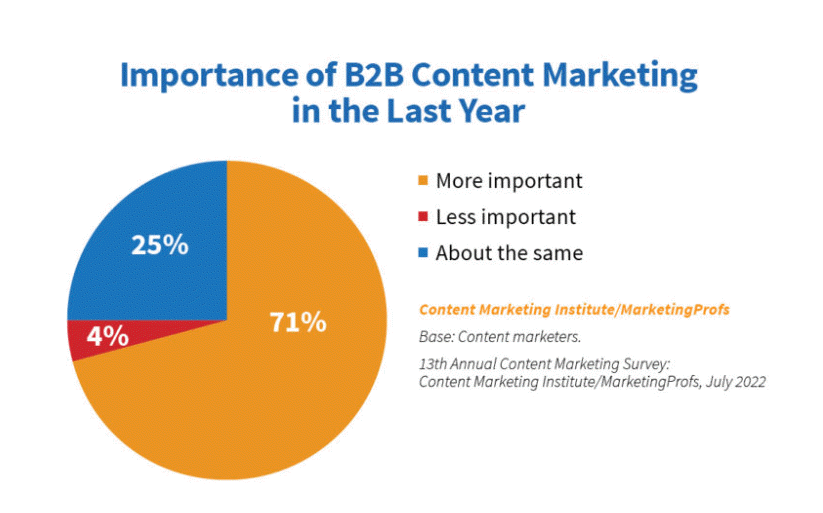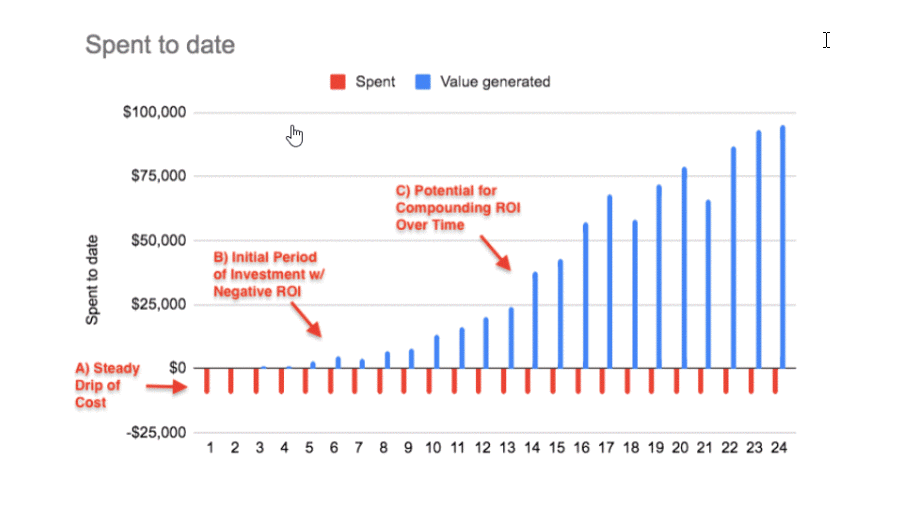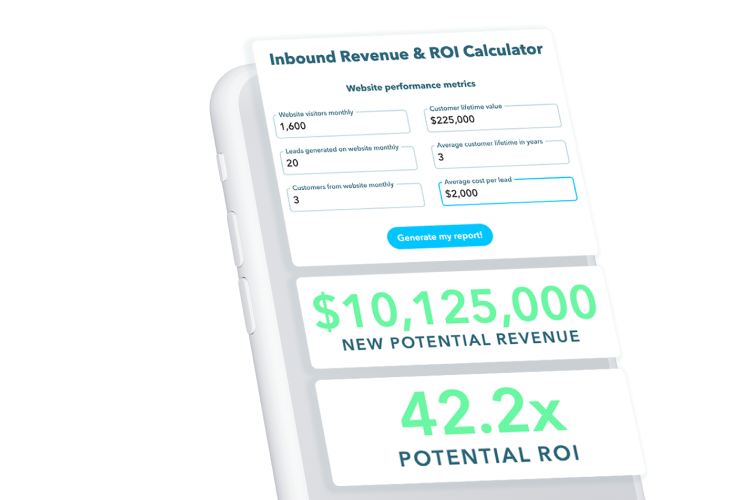 1,604 views
1,604 views 12754 Views
12754 Views  8 min read
8 min readCEOs have a lot on their plate with a full range of priorities. They are faced with disheartening short-term challenges, starting with the global economy, in which nearly 75% believe they will see declining growth during the year ahead. (if change does not happen)
In today’s environment, most C-level executives believe it is critically important to reinvent their businesses for the future. It becomes a balancing act of today’s tensions and a race for the future. We help business executives zero in on opportunities for sustainable growth with strategic marketing and alleviate some vulnerabilities to meet their future demands. We understand that revenue growth is a highly sought-after metric for executives, and successful companies focus on finding new ways to grow. Properly allocating your marketing budget can make the difference between profitability and running cash negative.
In this article, we want you to consider how consumer buying behavior has evolved in the last few years, uncover new ways to think about your budget decisions—the risk of spending too much, the risk of spending too little, and how strategic marketing is your greatest asset. And acknowledge that achieving new growth levels requires a marketing budget that falls between a recommended 9.6% to 11.8% of revenue, according to the Small Business Administration (SBA). Supporting those stats, Deloitte’s Annual CMO Survey says marketing spending growth is at its highest rate in over a decade, with as much as 13.6% allocated.
Deloitte’s Annual CMO Survey says marketing spending growth is at its highest rate in over a decade, with as much as 13.6% allocated.
Strategic marketing is using marketing techniques and approaches to gain a competitive edge. It’s a way for your company to differentiate itself from your competitors by highlighting your product or service strengths that provide a solution and better value to your customers. It addresses who to market to (buyer personas), the best services to offer your potential customers, and how to plan for the best growth.
Strategic marketing will increase brand awareness and customer reach, improve customer engagement, and enhance customer loyalty. The strategy and its tactics are all part of the marketing plan—the strategic marketing process. (Services we offer to B2Bs that are eager to grow but need a strategic content plan and have little time or team to accomplish it.) The process is beneficial as you will become more intentional with your marketing. Your campaigns will become well-planned and effective for the best results. Along with creating company goals and objectives, your company must consider the budget to drive your strategic marketing.
The amount of revenue businesses allocate to marketing is growing. Databox reached out to 85 small business owners and marketers and found that
 Image source: databox, “How to Set a Marketing Budget for a Small Business: 20 Tips”
Image source: databox, “How to Set a Marketing Budget for a Small Business: 20 Tips”
It shouldn’t come as a surprise as executives are trying to find ways to develop deeper customer relationships. They identify marketing goals, create better strategies, and allocate resources to new campaigns.
Strategic marketing will help you differentiate yourself from your competitor by focusing on your strengths, what makes your company unique that appeals to your customer, and provides superior value and better customer service. With a robust analysis of your competition’s strengths and value propositions, you’ll have insights into how they present themselves. You’ll see patterns of similarity and opportunities for differentiation. Understanding the differences will help you generate more value for your target customer. Implementing the knowledge acquired becomes a game changer for optimizing your business growth— determining where you need to allocate your marketing budget best.
Many businesses allocate a considerable percentage of their marketing budget to paid media over organic search. However, paid media has drawbacks and limitations:
In comparison, organic search:
Being different and standing out from the ‘Sea of sameness’ (not sure who gets credit for that term, but it was memorable) sets you apart from your competition in your customer’s minds. How content differentiation builds success, and you should not dismiss its value.
1. If you’re not differentiating your brand and using content to do it, and your potential customers are valuing your rivals’ content more, it will lead to higher customer acquisition costs and lower retention rates.
2. Brands are missing out by underinvesting and underestimating the impact of organic search. Terakeet, a Custom Software & IT Service, conducted various in-depth industry studies that confirmed the value of organic with . . .
“Organic search is the single most impactful marketing channel—delivering the most return for your investment as a customer acquisition strategy.”
3. The cost of waiting to invest correctly in your marketing budget through content and SEO can become your competitors’ gain. Let’s consider how buying behavior has changed in the last 2 years.
4. Recent data from TrustRadius CEO Vinay Bhagat shows buyers prefer a self-serve experience. Consumers are seeking out information and self-educating before making a final decision and talking to Sales. Today’s buyer wants information readily available. Where do they look for their information? Google+ and social media. B2B buyers are nearly 70% through their buying journey before contacting you. And, “Nine out of Ten B2B buyers say online content has a moderate to major effect on their purchasing decisions.”
5. It’s only a matter of time before your rivals take your business if you’re not engaging your audience through content. Creating strategic content will prevent losing value and build a stronger brand image and customer trust. Content should meet customers’ needs and add value to their experience. Your visitors have no time for subpar content. You need to engage and educate your ideal prospects to build trust in your brand and drive growth (or your competitors will).
Let’s face it. The pandemic increased content usage by 207%. And that makes for a crowded space, and only the tough, experienced, and educated will survive. Look at the number again . . .

One thing has become apparent; it’s time for B2B organizations to support content creation with the investment and staff (whether internal or external) it needs for success.
Current content challenges are real for B2B organizations:
CEOs are beginning to realize that the risk of standing still or not progressing may be greater than the risk associated with change. The recognition that organic search (when done right) targets the entire funnel while paid is more towards the bottom of the funnel queries. Businesses focusing on organic search strategies will be better positioned for the long haul. When done right, you’ll rank for keywords that bring in traffic, leads, and customers and continue generating free organic traffic as long as your rankings exist.
Having said that, leaders must set realistic goals. Search engine optimization (SEO) takes time to generate traffic and leads. So the value in the early months can be low but exponentially increase over time. Grow and Convert created this hypothetical graph to show how the investment and value of SEO change over time. 
The critical point here is to stick to a marketing channel long enough to drive revenue for the business. Brands grow when they come to mind in a buying situation. But your potential prospects need to know who you are. And that is why you need to become the most trusted voice in your space.
How do you do that?
Start by answering their questions and challenges, and address their pain points. Answer their problems through content—consistent blog posts and content assets on your site like eBooks, social media, email, and more. SEO-based content will keep driving traffic and conversions once it ranks. But many companies struggle with this part. They don’t have . . .
As executives, it’s your call to get the ‘T’s’ needed. Consult a Growth Strategist who can show you the ‘why’ and ‘how.’
Marketing budgets aren’t shrinking. Despite the pandemic, the recession, inflation, new data-privacy regulations, or whatever, C-level executives are investing in their marketing budget. CEOs understand that new strategies drive efficiency and expansion. They know that reducing investment may lead to long-term financial risks. You now understand the need to focus on customer acquisition and retention and, at the same time, build and maintain strong brands with strategic marketing.
You need Marketing to deliver campaigns that bring value and results—ROI. The key to your company’s online success is making content a priority. Competition is fierce and only getting stronger. It may be cost-effective to work with a partner who is experienced, flexible, and delivers quality content on a timely basis.
Schedule time with our Growth Strategist to discuss your situation and possible strategies for growth. Get your free assessment and a fresh perspective on your marketing.
Also Read – Best Ways to Develop an Effective Content Inbound Marketing Strategy
